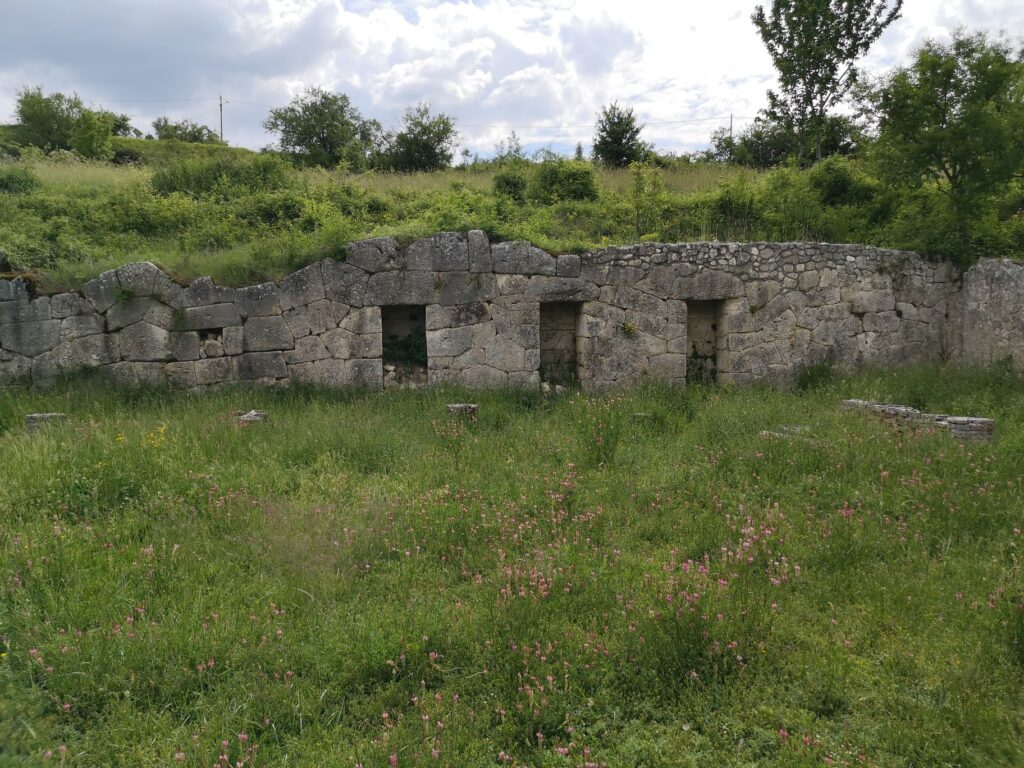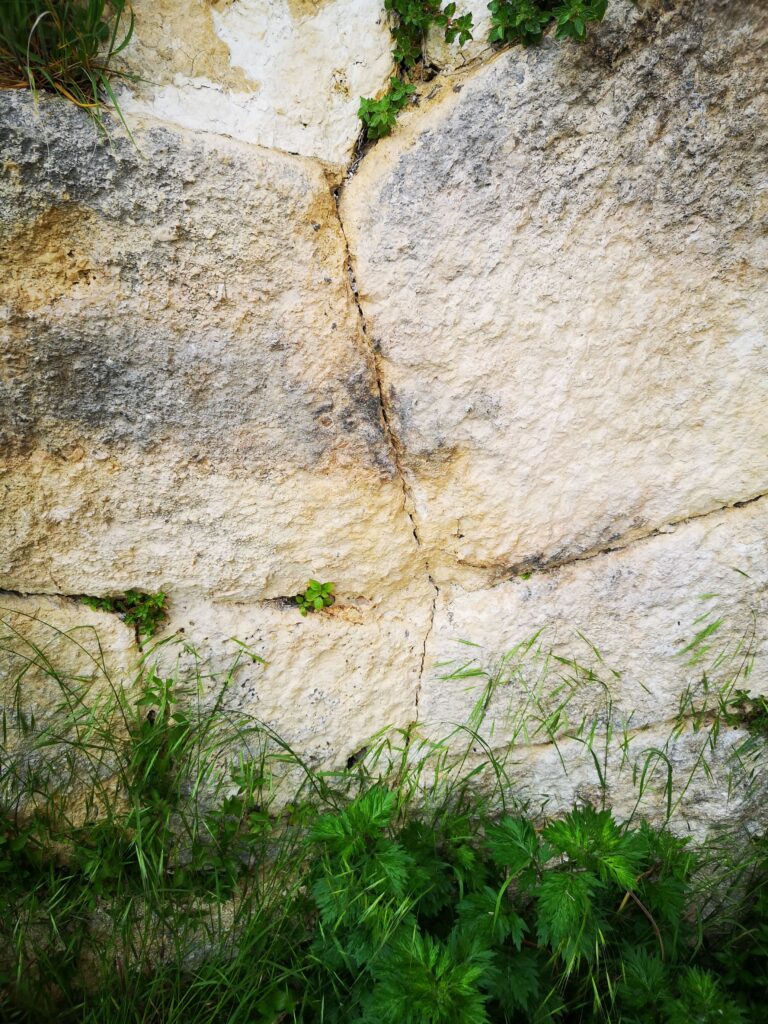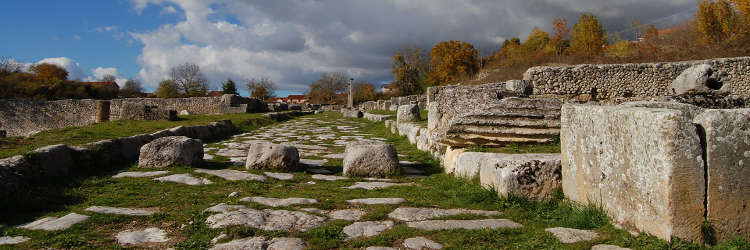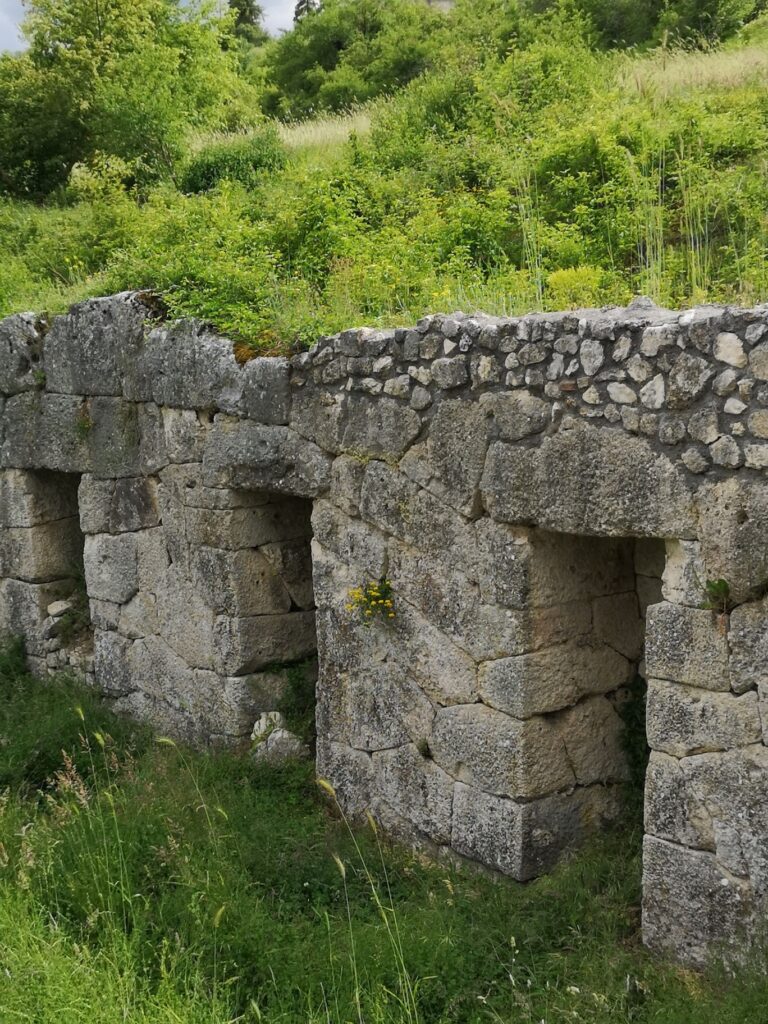THE CYCLOPEAN POLYGONAL WALLS AT ALBA FUCENS

Exploring Alba Fucens: A Window into Ancient Civilizations and the Mystery of the Cyclopean Walls
Alba Fucens, a captivating archaeological site in central Italy, offers visitors a journey through layers of history and mythology. Located in the region of Abruzzo, this ancient Roman town is situated at the foot of Mount Velino, overlooking the now-dried Lake Fucino. Originally established as a Roman colony in 303 BCE, Alba Fucens served as a strategic outpost along the Via Valeria, which connected Rome to the Adriatic coast. However, beneath its well-preserved Roman structures lie remnants of something even older and perhaps more mysterious: colossal megalithic walls, known as cyclopean or polygonal walls, that might predate the Roman settlement itself.
The Roman Colony of Alba Fucens: A Historical Overview

The Romans founded Alba Fucens as a colony of settlers and soldiers, intending it to be a key defensive location. Its elevated position on the ridge offered significant strategic advantages, allowing for surveillance of the surrounding valleys. The city was laid out in the typical Roman grid style, with organized blocks, a forum, baths, temples, and an amphitheater. Excavations have revealed significant architectural remains, including public buildings, private houses, and even remnants of frescoes.
One of the site’s most intriguing aspects is the integration of different construction techniques, with large, carefully shaped polygonal stones forming the outer defensive walls. These “cyclopean” walls stand in stark contrast to the Roman structures surrounding them, hinting at an earlier, more mysterious past.
The Cyclopean Walls: Clues to a Pre-Roman Past?

The cyclopean walls at Alba Fucens are composed of massive stones, irregularly shaped and fitted together without mortar in what is known as polygonal masonry. These walls are so named because ancient Greeks and Romans believed that only the Cyclopes—the mythical giants who forged Zeus’s thunderbolts—could have had the strength and skill to build such massive structures. These walls are not exclusive to Alba Fucens; they are found throughout the Mediterranean, from Greece and Italy to as far as the Levant, and remain a subject of fascination due to their mysterious origins.
While the Romans were known for their masonry skills, the cyclopean walls predate the typical Roman construction techniques, suggesting that they may have been built by an earlier civilization. Scholars and archaeologists have suggested that the walls at Alba Fucens could have been the work of the Pelasgi, a legendary people believed to have lived in the region before the arrival of the Greeks and Romans. The Pelasgi were often credited in ancient sources as the builders of the polygonal walls found across Greece and Italy, although much about them remains cloaked in mystery.
The Pelasgi: Myth or History?

The Pelasgi are an enigmatic people frequently referenced in ancient Greek and Roman sources. Ancient Greek writers, including Homer and Herodotus, mentioned the Pelasgi as pre-Hellenic inhabitants of Greece, known for their advanced architectural skills. While there is little concrete evidence to confirm the existence of a unified “Pelasgian” culture, many researchers believe that the term might refer to several distinct ancient groups with similar construction techniques and religious practices.
If the Pelasgi or a similar pre-Roman civilization built the walls of Alba Fucens, it raises fascinating questions about the continuity of settlement in the region. The polygonal masonry used in cyclopean walls was a skill that required precision and knowledge of engineering, suggesting that the builders had access to advanced construction methods long before the rise of the Roman Empire. The walls’ stability and durability even after centuries of weathering stand as a testament to their builders’ expertise.
Theories and Significance of the Cyclopean Walls

One popular theory is that the cyclopean walls were built as defensive structures, as they encircle the hill where Alba Fucens was later established. Given the site’s elevation, these walls would have provided a formidable barrier against potential invaders, helping the ancient settlers to defend their community. The immense size of the stones and their interlocking shapes make the walls incredibly resilient, a feature that may explain why these ancient fortifications still stand.
Another theory suggests that these walls had spiritual or ceremonial significance. The presence of similar walls in sacred sites throughout the Mediterranean hints at a possible symbolic or religious function. Could it be that the walls at Alba Fucens were intended to mark a sacred boundary or to honor a divine presence? Without written records, it is difficult to say for certain, but the mystery only deepens the allure of these walls.
Exploring Alba Fucens Today
Today, Alba Fucens is an accessible archaeological site, welcoming history enthusiasts, archaeologists, and travelers. Visitors can walk through the ruins and marvel at the cyclopean walls, which stand as a reminder of an ancient culture’s skill and resilience. The site provides an immersive experience, where one can imagine the ancient people who once thrived there, defending their city and perhaps practicing rituals long forgotten.
The cyclopean walls of Alba Fucens connect us not only to the Roman Empire but to a much older civilization whose legacy continues to mystify scholars. Were the Pelasgi the true builders of these walls? Or were they built by another forgotten people, long before the first stone was laid by Roman hands? The questions surrounding Alba Fucens remind us that history is an ever-unfolding mystery, and some stories may always remain just out of reach.
Whether you are drawn by historical intrigue or the beauty of Abruzzo’s landscape, a visit to Alba Fucens is a journey into the heart of the ancient world. Here, the past lives on, whispering the tales of civilizations that once ruled the mountains and valleys of Italy.
